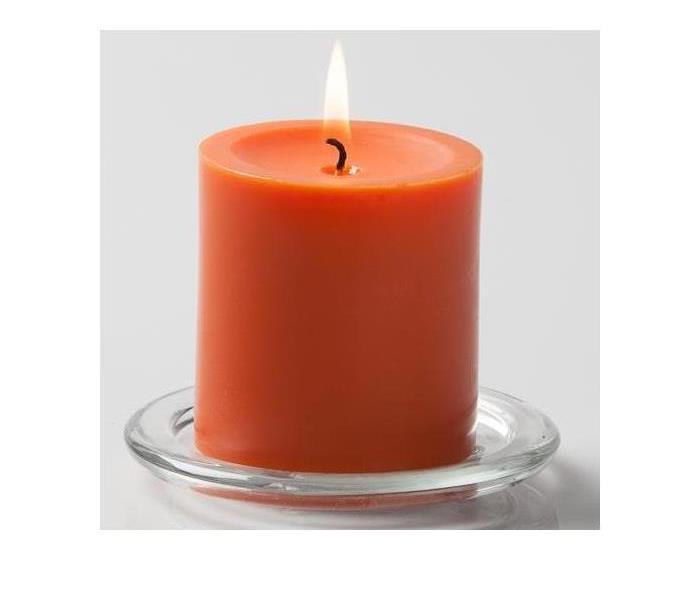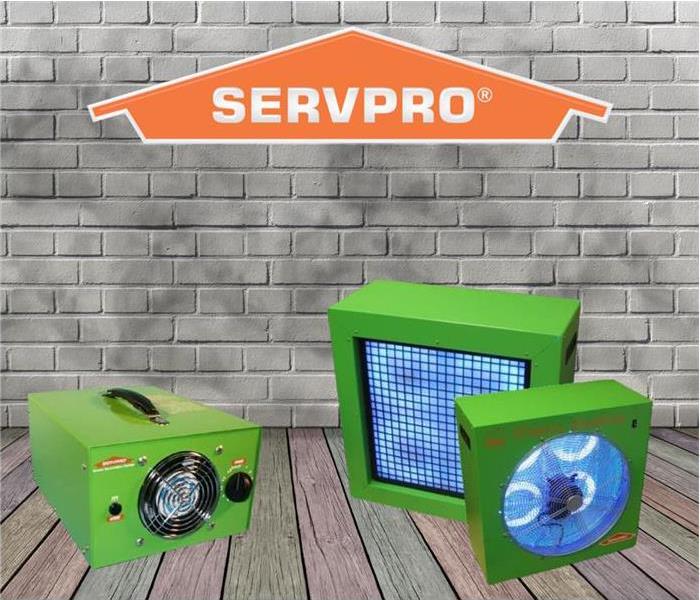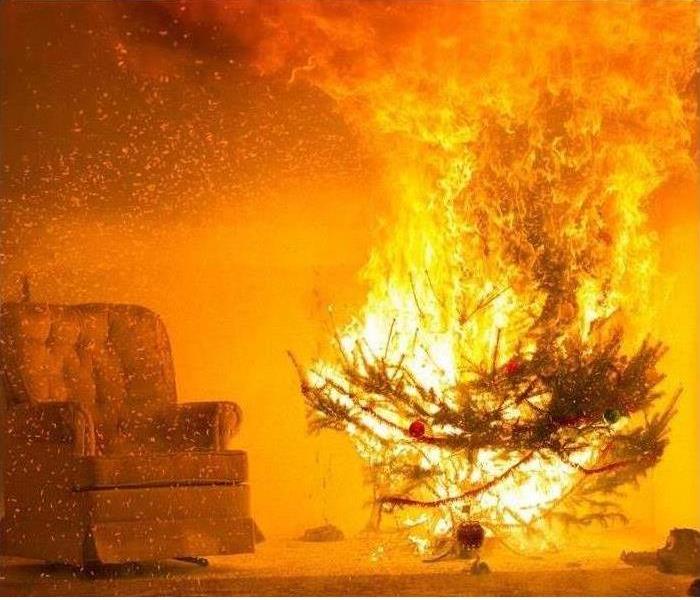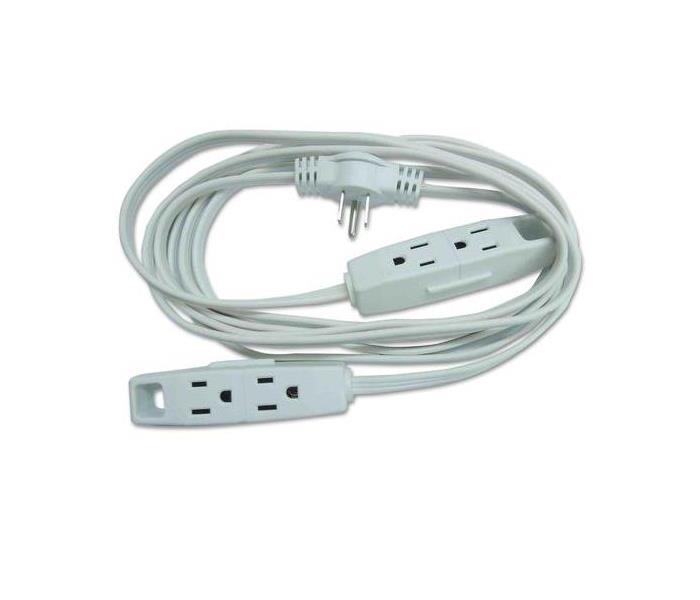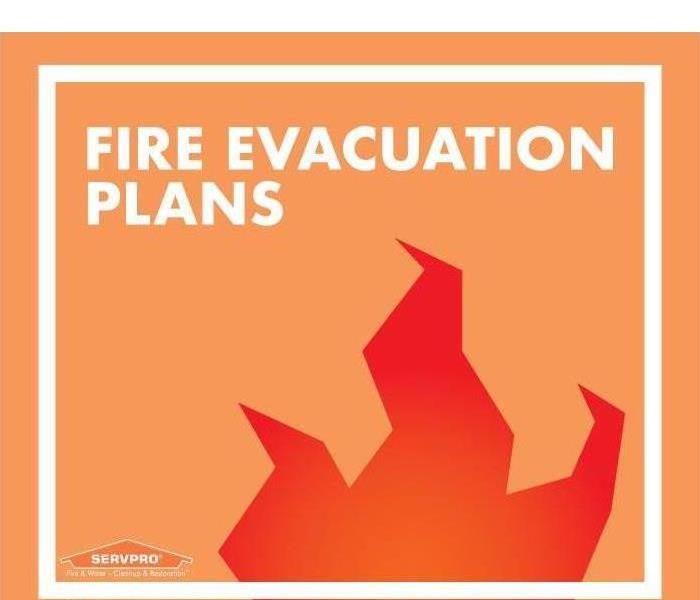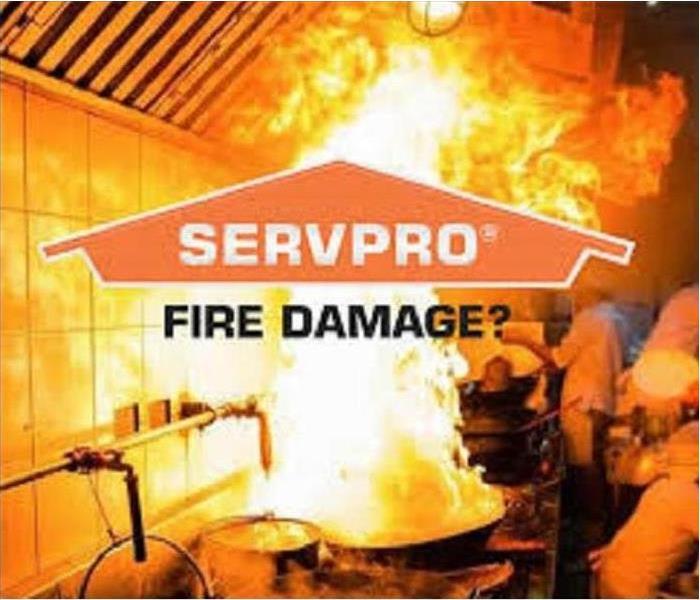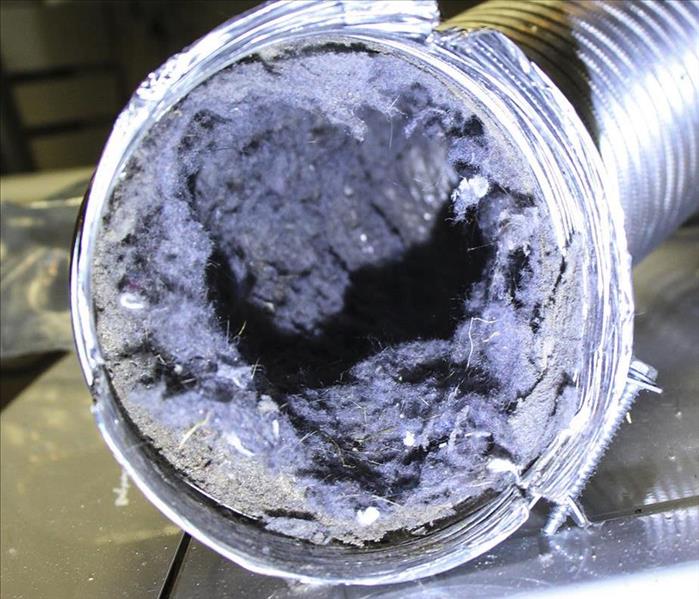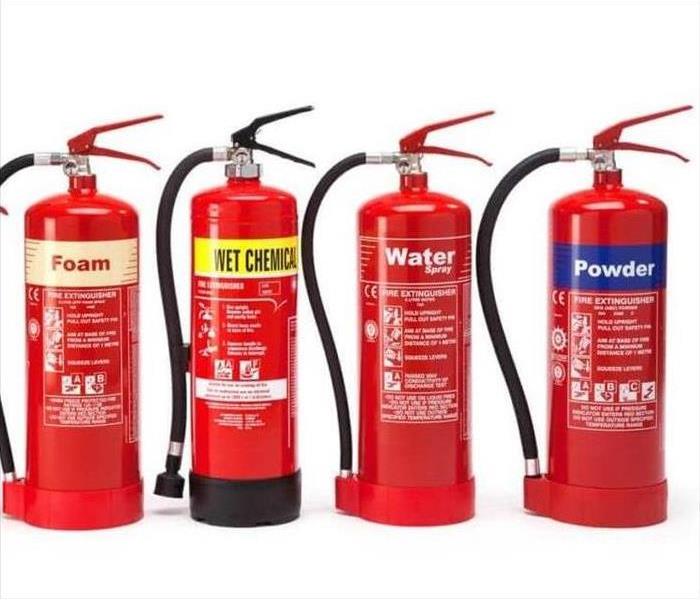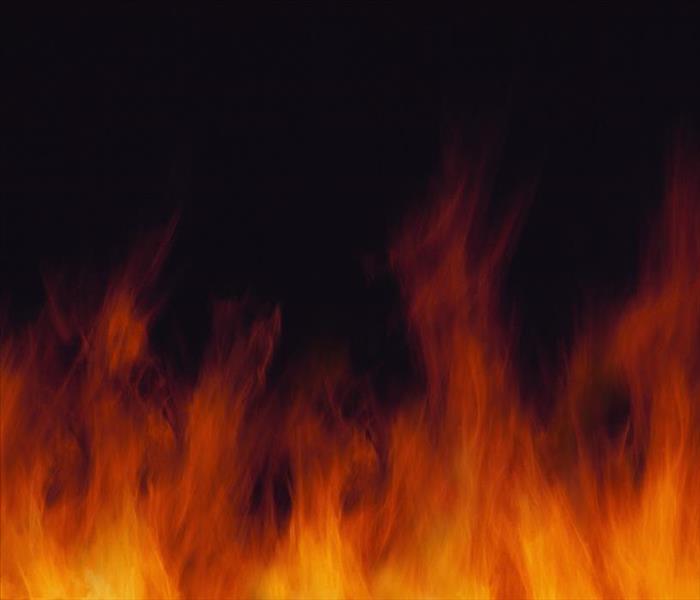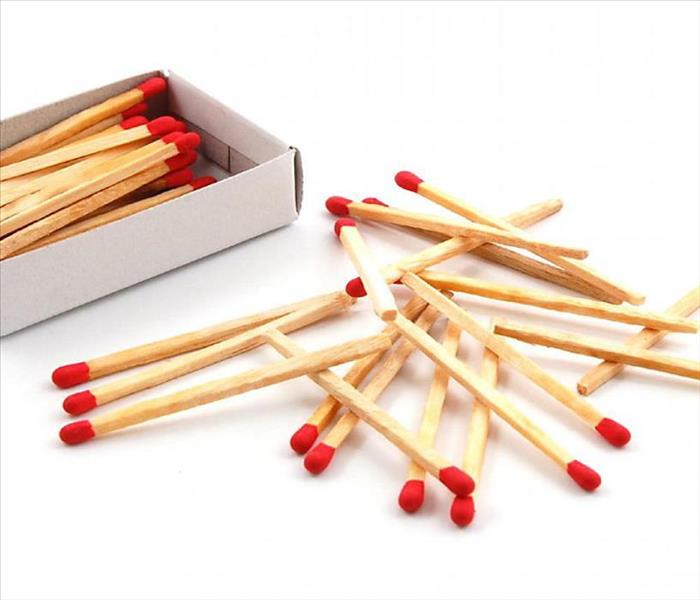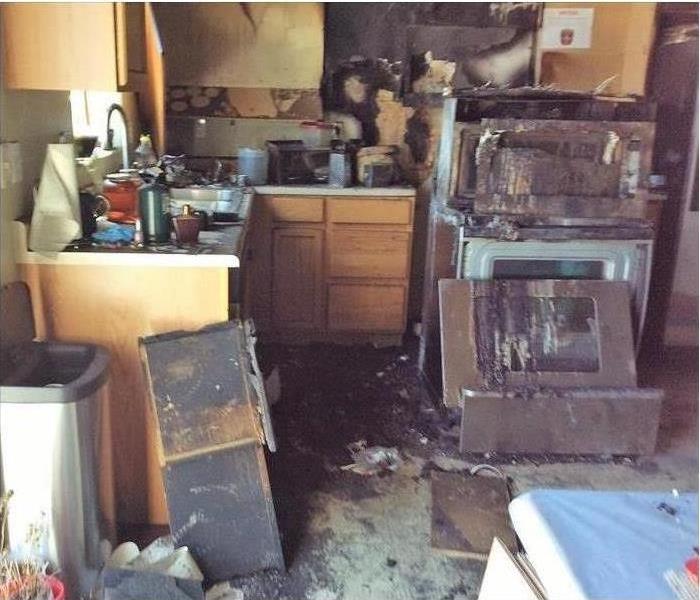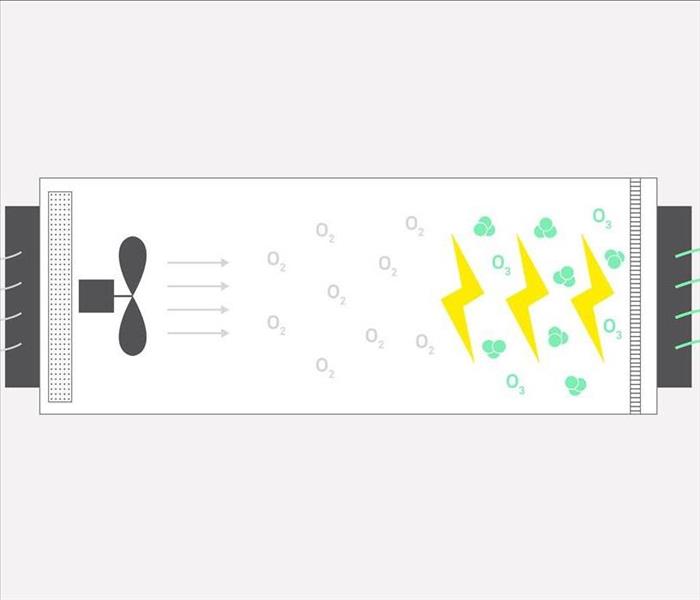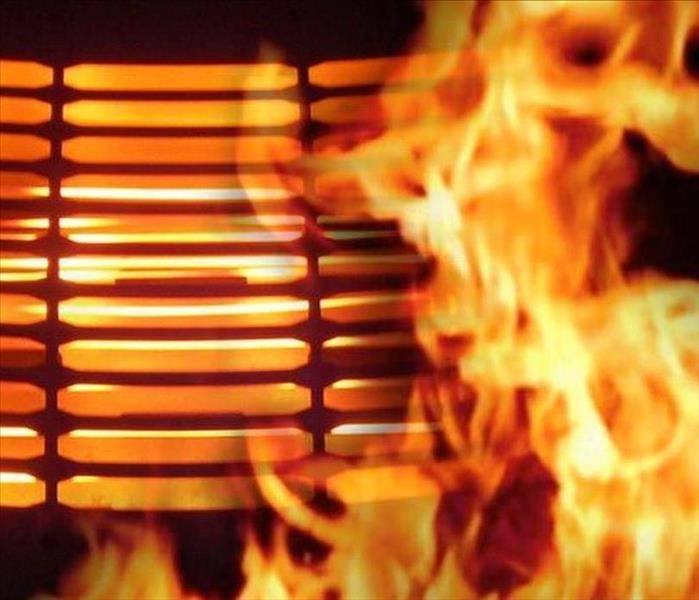Archived Fire Damage Blog Posts
Protecting Your Property: Effective Fire Damage Restoration in Sioux City, IA
4/1/2024 (Permalink)
When fire strikes, the aftermath can be devastating. At SERVPRO of Sooland, serving the Sioux City, IA area, we understand the challenges homeowners face in restoring their properties after a fire.
- Swift Response: Our team responds promptly to fire damage emergencies, employing advanced techniques to mitigate further damage and restore your property.
- Thorough Assessment: We conduct a comprehensive assessment to determine the extent of fire damage and develop a customized restoration plan tailored to your needs.
- Restoration Expertise: With years of experience and specialized equipment, we restore your property to its pre-fire condition, ensuring a safe and habitable environment for you and your family.
Trust SERVPRO of Sooland to provide reliable and efficient fire damage restoration services in Sioux City, IA. Contact us today for immediate assistance and peace of mind.
Fire Restoration
3/9/2023 (Permalink)
Fire damage can be devastating to any home or business, causing both physical and emotional turmoil. Whether the fire was small or large, the aftermath can be overwhelming. Fortunately, SERVPRO of Sooland offers comprehensive fire restoration services to help homeowners and business owners restore their properties after a fire.
SERVPRO of Sooland’s fire restoration process begins with a thorough inspection of the property. This includes assessing the damage caused by the fire as well as any water damage that may have resulted from firefighting efforts. Once the inspection is complete, SERVPRO of Sooland will develop a comprehensive restoration plan that outlines the steps needed to restore the property to its pre-fire condition.
One of the first steps in the restoration process is removing any standing water and drying out the affected areas. This helps to prevent mold growth and further damage to the property. SERVPRO of Sooland uses industrial-grade dehumidifiers, air movers, and other specialized equipment to ensure that the drying process is as efficient as possible.
Once the property is dry, SERVPRO of Sooland will begin the cleaning and restoration process. This includes removing soot, smoke, and other fire-related residues from walls, ceilings, and other surfaces. We use specialized cleaning agents and techniques to ensure that all residue is thoroughly removed, restoring the property to its pre-fire condition.
If necessary, we can also provide structural repairs and reconstruction services. This may include repairing damaged walls, ceilings, and floors, as well as replacing damaged electrical and plumbing systems. SERVPRO of Sooland has the expertise and resources to handle all aspects of fire restoration, no matter how large or small the project may be.
In addition to its fire restoration services, SERVPRO of Sooland also offers a range of other services to help homeowners and business owners recover from disasters. This includes water damage restoration, mold remediation, and storm damage cleanup. With its 24/7 emergency services, SERVPRO of Sooland is always available to help in times of need.
Overall, if you're in need of fire restoration services, SERVPRO is the company to call. With its expertise, resources, and commitment to customer satisfaction, SERVPRO of Sooland can help you restore your property to its pre-fire condition quickly and efficiently. Don't hesitate to reach out to SERVPRO of Sooland for all of your fire restoration needs.
5 Fire Prevention Tips
2/9/2022 (Permalink)
Prevent a Home Fire
The best way to survive a home fire is by preventing one from occurring. Fortunately, fire preparation tasks are straightforward.
Install enough smoke alarms in your home.
Ideally, these alarms should be located inside each bedroom, on every level of the home, at least ten feet from cooking appliances, and in the halls outside of the bedrooms. Don't forget to test the alarms every month and replace the batteries on an annual basis. Make sure that family members know how to recognize the alarm and how to exit safely.
Perform home maintenance consistently and thoroughly.
Greasy buildup in burners, lint in the dryer hose, and neglected chimneys are all cause of fire damage. Many household chores and repairs, such as repairing damaged sockets, have a significant impact on fire preparation and prevention.
Store flammable items safely.
Keep gas for the lawnmower, lighter fluid, and similar products stored in a cool location and out of reach. Additionally, consider the many other potentially combustible items. Go through the cabinets and closets of your home, watching for things such as lighters, matches, chemicals, and other flammable items.
Prepare for emergency situations.
A ten-gallon can of baking soda near the cooktop quickly puts out grease fires, safely and effectively. Fire extinguishers with BC or ABC rating are best. An A rating indicates that pressurized water is in the canister and that the extinguisher is not appropriate for cooking fires.
Teach Your Family Fire Safety
In addition to teaching children not to play with matches, fire safety education should include not throwing laundry over a lamp or leaving papers near heaters. The more your children are aware of how fires start, the better they'll be at avoiding them.
What to do After a Fire?
2/9/2022 (Permalink)
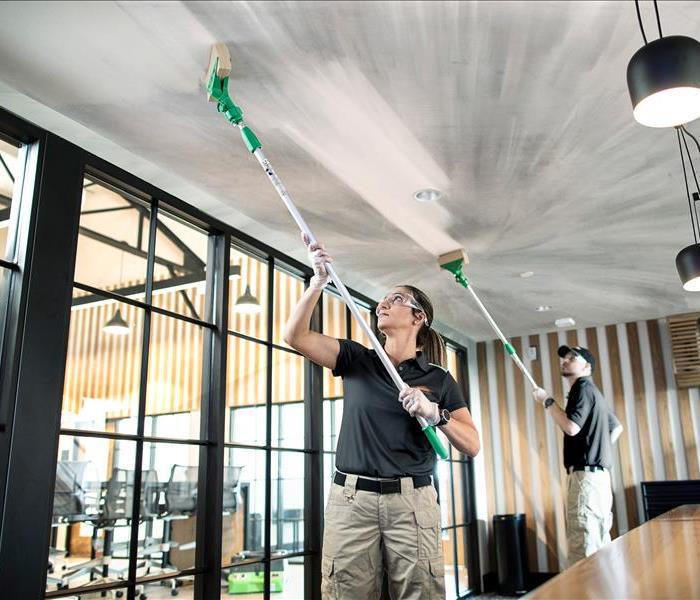 Things to do after a fire
Things to do after a fire
Few things are more complicated than having to deal with fire damage in the home. Sometimes, the steps that you as the homeowner take after the fire damage determine the speed at which the home will be restored to the state it was in before the fire damage happened. Below are is a guideline outlining the steps you ought to take after an electrical fire or another type of fire breaks out in your home.
3 Steps to follow after suffering Fire Damage.
1. Evacuation
The very first thing you need to do is ensure that all the people who were in the building have gotten out. In case there is someone still trapped in the building because of soot damage or smoke damage, you should call in emergency services such as the fire truck, fire sprinkler systems, fire hoses, and firefighters to help rescue them and put out the fire. Do not try to get back into the house once you are out where it is safe.
2. Calling the insurance company
When the fire has been put out by the fire sprinkler systems, and the fire trucks have left, the most challenging part of the fire restoration process starts. As a homeowner, this is the point at which you call the insurer and inform them of the accident. Making the call to your insurer gives you the peace of mind you need to proceed to the next important step in commercial fire damage and restoration.
3. Contacting the fire restoration company
Commercial fire damage experts recommend that you should stay away from a building that has suffered fire damage until a fire restoration expert has certified it safe to enter. Contact SERVPRO of Sooland and let us know about the fire. Once contacted we will send a project manager to you home to assess the damages and work with you and your insurance carries to put you back to pre loss condition!
Smoke damage and soot damage in the house is a typical result of the fire. We will clean up the smoke damage on all surfaces and make sure the house is as clean as it was before the fire.
Cleanup After a Fire
1/6/2022 (Permalink)
What's next?
Few things are as devastating to any homeowners as a house fire. If your home catches fire, our team at SERVPRO of Sooland works to aid you in the process of rebuilding. However, there are a few things you must do after a fire has occurred that applies to homeowners anywhere in the Sooland area, or anywhere else.
Give Your Insurance Adjuster a Call
You must call your insurance company promptly after. Your agent will help you figure out what happens after the fire has been put out, and they will walk you through the process of finding the proper contractors. Your adjuster should assist you in finding a place to stay in New York while your home is no longer livable, and they can help you figure out the financial situation you are now in.
Calling in the Restoration Specialists
SERVPRO is a restoration company that helps people with their homes following a fire throughout the US. What makes a restoration company imperative is that you cannot just head back into your home after there has been a fire. There are numerous hazards that must be cleaned, boarded, and a variety of other issues that must be handled first. For example, the water used to put out the fire can cause water damage, a whole other problem to add to the list following a fire.
Sort Your Property
Once you have a restoration specialist handle the details inside your home and you’re cleared to enter, it’s time to sort your property out from what can be saved and what you must part with. There may be undamaged items in your home that you can salvage. There are many more that are unsalvageable, and those items will need to be sorted and disposed of.
Being the victim of a house fire is heartbreaking. It’s also a scary process to deal with, but you are not required to go through this alone. The people you hire at SERVPRO are there to help you with your new needs, we are here to make sure you know what to expect and how to handle it!
3 Home Fire Safety Tips
10/1/2021 (Permalink)
A home fire occurs every 86 seconds in the United States, according to the National Fire Protection Association (NFPA). These fires result in thousands of deaths and injuries each year, along with billions of dollars in property damage. While the numbers are alarming, some of the harm caused by residential fires is avoidable. A strong home fire safety plan can improve your family's chances of escaping a fire safely and, in some cases, it may help you avoid one altogether. Learn three top ways to practice fire safety in the home from the experts at SERVPRO of Sooland.
- Home Fire Prevention
The best way to stay safe from fires is to stop them from occurring in the first place. Start by implementing the fire-prevention measures below:
- Keep flammable materials away from heat sources. If you're using a portable space heater, keep it at least 3 feet away from flammable objects like furniture, blankets, electronics and anything combustible.
- Don't leave flames or smoking materials unattended, including fireplaces, stovetops, candles and cigarettes. Avoid smoking indoors, and never smoke in bed.
- Fix or replace frayed electrical cords or wires.
- Don't overload wall outlets or extension cords.
- Have your furnace or home heating source periodically inspected and kept in good working order.
- Make sure everyone in the household understands the importance of home fire safety and observes fire-safe habits, including your kids.
Get more fire prevention and safety tips from Ready.gov.
- Home Fire Safety Equipment
A good home fire safety plan includes having the right supplies and safety equipment on hand. These tools will be your first line of defense in the event of a fire, and they can dramatically improve your ability to react effectively.
- Install smoke detectors on every floor of your home, in every bedroom, and outside each sleeping area.
- Inspect and maintain your smoke detectors
- A fire extinguisher can keep small, containable fires from growing out of control. Have an extinguisher handy whenever you use cooking or heating equipment.
- Learn how to use a fire extinguisher.
- Consider installing an automatic sprinkler system in your home.
- Fire Safety Planning
During an emergency, reaction time is critical. Beyond the equipment you need, everyone in your household should know what to do if a fire starts. Here are some tips to get you started:
- Create a fire safety plan that establishes at least two escape routes and a safe location away from the home where everyone can meet.
- Make an emergency communications plan to stay in contact during and after a fire.
- Practice your escape plan twice a year so everyone can act quickly when it counts.
- Teach children how and when to call 9-1-1.
Halloween Fire and Safety Tips
10/1/2021 (Permalink)
For kids, Halloween is often one of the most anticipated holidays of the year. Dressing up, trick-or-treating, candy, parties, hayrides and corn mazes make for great fun and amazing childhood memories. Unfortunately, Halloween has become a holiday with increasing numbers of home fires.
According to the National Fire Protection Association (NFPA), decorations were the first item ignited in an estimated average of 860 reported home structure fires every Halloween between 2009 and 2013. These fires resulted in an average of 13 million dollars in direct property damage per year. At such a high cost, it’s crucial that you take the necessary steps to help prevent a fire from igniting in your home this season.
To help you enjoy a safer holiday, follow these important Halloween safety tips from the experts at SERVPRO of Sooland.
HALLOWEEN SAFETY: DECORATIONS
Use these tips to help prevent your Halloween decorations from catching fire:
Pumpkin Safety
The traditional jack-o-lantern features a smiling or spooky face that’s illuminated from within by a candle. Placing candles inside a cleaned-out pumpkin is a fire hazard. In fact, any lit candle left unattended is a Halloween fire hazard. If they’re inside pumpkins, they can tip over, ignite surrounding materials and cause a fire. To stay safe, use a battery-operated candle or LED light to illuminate your festive pumpkins.
Candle Safety
Using paper bag luminaries or lining a mantle, porch stairs or windowsills with lit candles can create an eerie effect for Halloween night. However, this type of decorating is a fire hazard and poses a risk of injury to you and your guests. To help prevent a fire from decorative candles, replace them with battery-operated, no-flame candles that still provide the same spooky ambiance.
Decoration Safety
Some decorations, both inside and outside of your home, can be dangerous if left near a heat source. Straw, hay bales, corn stalks and other dry materials are flammable. To protect your home from a fire, keep these decorations away from any kind of heat source, including fireplaces, wood-burning stoves, candles and outdoor fire pits.
HALLOWEEN SAFETY: YARD MAINTENANCE
Halloween has the potential to bring plenty of residents through your lawn. To help keep trick-or-treaters and their parents safe, check that your yard is properly maintained and has adequate lighting. Before night falls, complete these tasks:
- Remove large amounts of debris, including leaves or sticks, to help reduce the risk of trips and falls.
- Check that the exterior lights are working properly, including any path lights or Halloween decorations.
- Ensure that steps and railing are secure, if necessary.
By following these tips, you can help keep everyone safe. We hope you have a happy and fun Halloween this year!
Unfortunately, accidents still happen. In the event that a fire broke out in your home, call on the experts at SERVPRO of Sooland. We’re available 24/7 every day of the year to get your home back to normal after a disaster. With the proper expertise, tools and innovative equipment, we can restore your home fast. Learn more about our residential fire and smoke damage removal services before the unexpected happens.
How To Recover From Fire Damage
10/1/2021 (Permalink)
A fire can sweep through a commercial building quickly. The sooner the flames are put out, the less damage there will be. However, water is one of the main ways to stop a fire, and water damage can sometimes wreak just as much destruction on a property as the fire itself.
Water damage after a fire can occur from the water hoses firefighters use, as well as the activation of the built-in sprinkler systems inside a commercial building. Find out how your business can recover from both types of water damage after a fire with help from the experts at SERVPRO of Sooland.
THE TRUTH ABOUT WATER DAMAGE
Excess water can soak everything inside a building, including equipment, electronics, upholstery, flooring and building materials. The longer water sits, the greater the risk that your building's contents will be permanently damaged or destroyed. Beyond the physical damage water can cause, moisture can also cause mildew and mold growth. If mold has an opportunity to spread in your business, you could face additional damage or restoration costs in the hundreds or thousands of dollars. That's why immediate water extraction after a fire is crucial.
Whenever water damage occurs, take the following steps as soon as possible:
1. DOCUMENT THE DAMAGE
After officials have declared it safe to re-enter the building, document the fire and water damage. Create a list of all items that were damaged or destroyed, and take plenty of photos before attempting any clean-up. Provide your insurance with as many details as possible about your losses so they can properly adjust your claim.
2. CONTACT YOUR INSURANCE COMPANY
Notify your insurance company as soon as possible, and advise your agent about any repairs you intend to make immediately. The agent may advise you to wait for an adjuster to visit your commercial property before you make repairs or begin the clean-up process.
3. REMOVE EXCESS WATER
Open doors and windows to allow plenty of fresh air to circulate and dry your building. If possible, use a sump pump to remove excess water.
4. PREVENT FURTHER DAMAGE
Mold and mildew can begin to grow within one to two days of water damage. To prevent extensive damage to your property, contact a professional water restoration company right away.
WHAT TO EXPECT FROM WATER RESTORATION SERVICES
In order to minimize damage, removing excess water as quickly as possible is of the utmost importance. A professional water restoration company will work to save as much equipment as they can, including saving your business's electronics after water damage They'll also restore your commercial property back to its former state to help you get back to business.
When you call for water restoration services, you can expect professional technicians to help in the following ways:
- Use specialized equipment to quickly remove all water.
- Thoroughly dry affected areas, including wall cavities, flooring and other building materials.
- Get rid of remaining moisture in the building by dehumidifying affected areas.
- Conduct an expert mold and mildew inspection and provide treatments, if necessary.
- Conduct thorough bacteria inspection and treatment to ensure the building is safe to return to.
- Restore the building and any items that are salvageable.
Dealing with water damage after a fire can be challenging and stressful. When you call in the professionals at SERVPRO of Sooland, you won’t have to go through it alone. Our commercial water damage services use state-of-the-art equipment to get your business up and running again. With a commitment to be at your side every step of the way, we'll work with you to develop a comprehensive plan that restores your building and helps you get back to business.
What to Do After a Fire
2/8/2021 (Permalink)
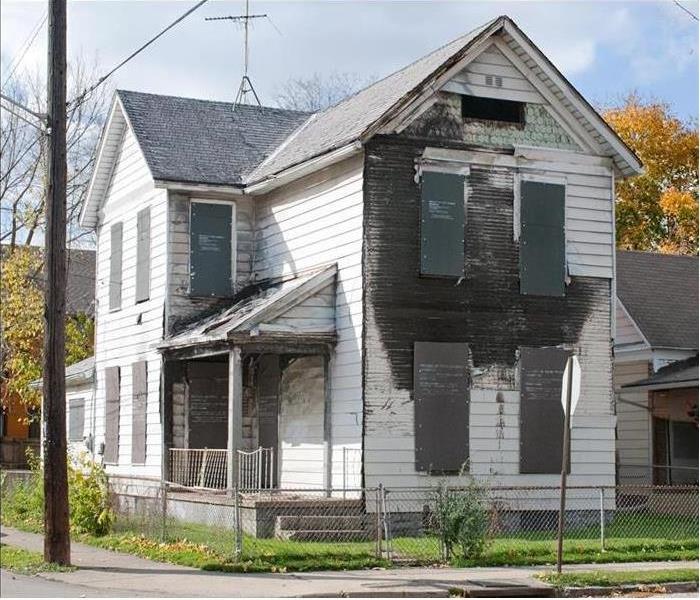 Board up after suffering fire damage.
Board up after suffering fire damage.
Immediately after a fire is a very stressful time. With all of the fire damage and loss, it can difficult to see what to do next. The first thought on most people's minds is to repair the damage, but there are a few things that you should consider doing even before that. The very first thing you should do is call your insurance company. The second is to secure your home.
3 Steps to Follow After a Fire
Secure Your Home
Securing your home does not mean lock your doors. Remember that there could be hundreds of access points after a fire. Between the flames, smoke and the fire department, the damage can be extensive. When you secure your home, you will need to board up holes, windows and doors.
Here's why you need to tarp or board your home:
- Vacant homes are catnip to vandals and thieves
- Your insurance may require it
- Rain, wind and sun can make the damage worse
- Someone could go in and hurt themselves
You must cover all the exposed areas of your home as soon as possible.
Take an Inventory
When you are allowed back in your home, you will need to take an inventory. Take a look at what you need to throw out and what can be salvaged. Make sure you board up or tarp anything exposed to the elements while you are doing this. It is far easier to assess the damage and cover things that need to be covered simultaneously.
Find a Restoration Company
You should also find a restoration company as soon as you talk to your insurance company. Some companies will even offer emergency board up services if they have to wait to start the repairs and remediation. Some of the reasons they may have to wait are delays with insurance or fire inspectors. This service will reduce the cost of your repairs and help to keep your home safe.
Fires are devastating. Just remember to board up, take inventory and find a remediation company that can help you. These steps can help you avoid any additional damage.
Frequently Lost Items During a Fire
2/8/2021 (Permalink)
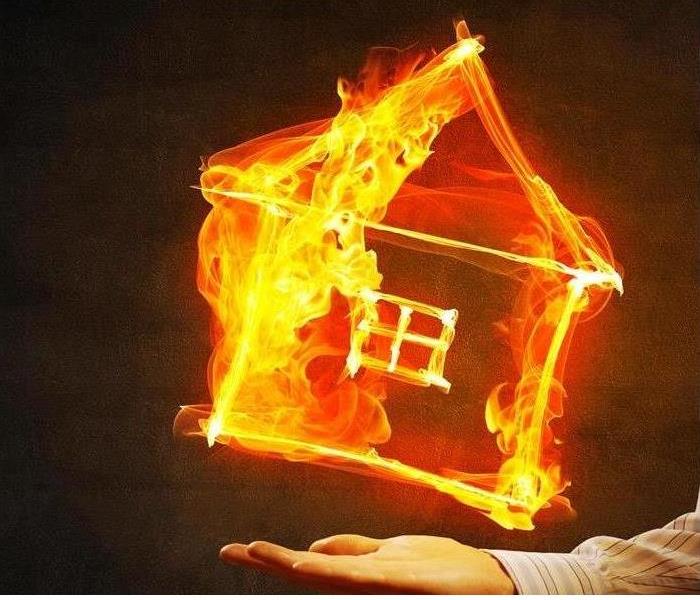 A fire in your home may not result in a total loss.
A fire in your home may not result in a total loss.
List Of Items That Are Frequently Lost During a Fire
Documents
The good thing about replacing important documents is that you can find almost all of them online. You likely have digital copies of your income tax records, insurance information and legal documents. However, you need to have hard copies of certain documents:
- Drivers license
- Passport
- Titles and deeds
- Social security cards
- Health insurance cards
If these items are listed as part of the fire damage to your home, start the process of replacing them right away.
Food
You will likely need to throw away all food if the fire was anywhere near your kitchen. The refrigerator and freezer may keep food fresh under normal circumstances, but it is unlikely that they were able to withstand the fire's blaze well enough to protect the food inside during a fire. Non-perishable items must be tossed as well. Plastic and cardboard are no match for smoke and soot. Even the food in glass jars and aluminum cans can be spoiled by the high heat of a house fire. It is better to get rid of food altogether than take chances that it has gone bad.
Toiletries
Just as you would not want to consume anything that the fire or extinguishing agents have touched, you also don't want to put anything from the fire on your body. This includes cosmetics, soap, shampoo, conditioner, toothpaste and hair styling products. It's also necessary to throw away any medication that could have been subject to high temperatures or toxic fumes.
Many items in your home can be salvaged after a fire, but some must be replaced. Mitigation professionals can help you determine what to throw away and what to keep.
SERVPRO Technicians Remediate Many Types of Damage After a Fire
1/5/2021 (Permalink)
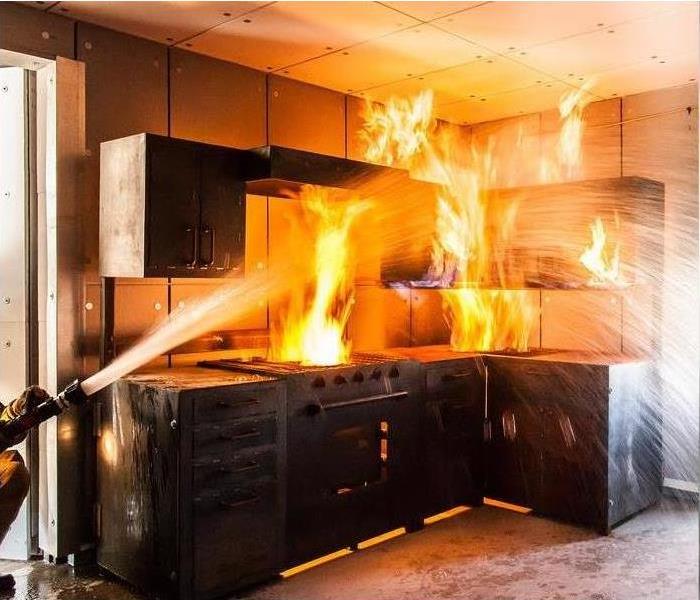 Kitchen fire damage happens everyday in homes around the country. If a fire gets out of control, contact SERVPRO after the firefighters leave.
Kitchen fire damage happens everyday in homes around the country. If a fire gets out of control, contact SERVPRO after the firefighters leave.
SERVPRO Technicians Remediate Many Types of Damage After a Fire
Fire damages not only the structure and contents of your home, but the event can be frightening and affects your sense of refuge and safety. Homeowners who face the chaos after a fire need the compassion and experience an established leader in the remediation industry brings to the scene of their disaster.
Just a few minutes of inattention can result in kitchen fire damage in Sooland from an overheated pan bursting into flames in your residence. Smoke and soot fill that room and move through your home very quickly. Even if you have a functioning fire extinguisher nearby, it takes a few minutes to find and engage it to extinguish the flames, permitting the substances created by the combustion to spread in the meantime. Once the fire is out, you now confront the chemical residue from the extinguisher in addition to the damage from the fire itself. Highly skilled and IICRC trained abatement technicians employ effective strategies to clean all surfaces coated with fire damage and chemical residues.
SERVPRO fire damage remediation crew members swiftly assess the damage to the kitchen and the rest of your home. A seasoned manager devises a plan accounting for all the tasks needed to clean the walls, ceilings, floors, appliances, furnishings, and other surfaces soiled or otherwise harmed by the fire and its extinguishing. The team matches appropriate cleaning solutions and tools to the residues throughout all spaces in your dwelling.
Ash and light, dry soot respond well to cleaning techniques like vacuuming, with HEPA filter equipped models, and dry sponging. Stickier coatings require wisely chosen cleansers or solvents sprayed on the damaged surfaces and then wiped or scrubbed clean. Fixtures or objects featuring intricate details like blinds or chandeliers may require immersion cleaning. SERVPRO workers are familiar with a broad range of methods that leave the structure and contents or your home cleaned and refreshed after fire damage.
An inspection and cleaning of the HVAC system in your fire-damaged home may be recommended by SERVPRO if the fire blazed and smoked near open vents. This step helps assure that the cleaning done eliminates as much of the fire damage residue as possible and prevents the continuous spread of hidden soot when heating and cooling occurs.
Rely on SERVPRO of Sooland to respond to your fire damage remediation needs with professionalism and empathy. One call to (712) 274-2416 delivers the help you need fast any hour of the day or night.
SERVPRO of Sooland Top 10 Fire Hazards in the Home
12/29/2020 (Permalink)
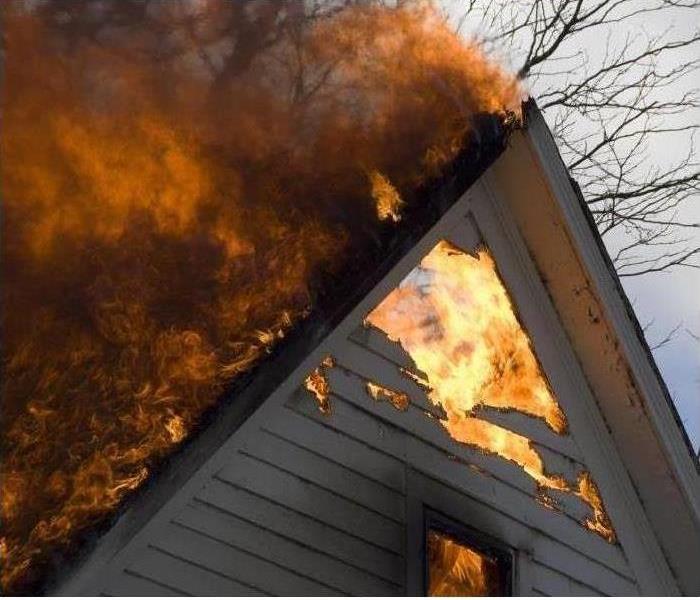 Flames coming out of roof
Flames coming out of roof
While the expert team of SERVPRO of Sooland is here to help if you experience a fire disaster below you will find the top 10 Fire Hazards in the Home.
1. Electrical Outlet Issues
The top cause of House Fires in the United States stem from issues with electrical outlets. In 2020, we are using more electronic devices than ever, and doing so we oftentimes are using too many on a single outlet. To help prevent fires be sure to not exceed your voltage on a single outlet in your home.
2. Outdated Home Wiring
Household wiring should be checked routinely to avoid circumstances that trigger major fire damage in your home. Often times wiring that is outdated, worn, or even compromised from animals can cause fire hazards in and outside your home.
3. Decorative Lights
With Halloween and Christmas right around the corner, be sure to take the proper precaution when using decorative lights including outside lights, plugs, surge protectors, extension cords, and turning off your Christmas Tree Lighting when you are not home to minimize risks.
4. Hair Products
When in a rush, do not forget to unplug your styling products. A simple mistake can result in huge damages. Make sure that your curling iron and hair dryers are off and placed on heatproof material to help reduce the chances of a fire.
5. Toasters
Proper care of your toaster can help to prevent house fires. Crumbs inside the toaster can be dangerous as they can cause sparks which leads to hazardous problems in the kitchen. Make sure to clean your toaster routinely.
6. Candles
We all love candles and aromas however we need to be cautious of placement and be sure to put them out prior to going to bed or leaving the house. Always try to place candles in holders that prevent them from falling on surfaces or tabletops.
7. Washer & Dryers
Washer and Dryers are a leading cause of fires. Routine maintenance and cleaning can help to prevent fire hazards by cleaning filters and vents as well as the outside vents of the home.
8. Smoking
If you are a smoker or someone smokes in the home, try to do so outside. Always keep lighters and matchsticks out of reach of your children as this is one of the top causes of home fires.
9. Dust in Electric Sockets
This is a recurring process as the dust piles inside electrical sockets and if not cleaned regularly may ignite and result in fire hazards.
10. Electric Blankets
While they do wonders to keep us warm in the winter, Electric Blankets can cause fires. Be sure to use an electric blanket that doesn’t have too much wear and tear. When not in use, do not fold the blankets as it helps prevent electrical issues that lead to fire hazards.
Should you experience Home Fire Damage, let the experts at SERVPRO of Sooland help restore your home “Like it never even happened.” With our 24/7 emergency dispatch, we will have someone on-site quickly to access the damage and help you in your time of need.
It's Candle Fire Season!
12/7/2020 (Permalink)
Be Cautious When Using Candles
Yes, that soft light and aromatic fragrances that fill the room from a lit candle can be an easy way to create the atmosphere that you want in your home. However, candles can also become a safety hazard if they are not used properly. Candle fires are common, but the following tips can help you avoid them.
1. Don’t Leave Burning Candles Unattended:
It may seem like an annoyance to extinguish a candle every time you leave the room. However, leaving it burning could result in a candle fire if something gets too close to the flame or if it burns too low. It is best to blow out candles before going to bed at night, even if the candle is in the same room you sleep in..
2. Keep Them Away From Flammable Items:
When you are using a candle, you should be sure to have the area free of flammable objects. This can include papers as well as fabrics such as curtains and bedding. These types of items should be at least a foot away from any candles that are in use. Flammable liquids should be kept even further away.
3. Keep Them Out of Reach of Pets and Children:
Both children and pets often come with an excess of energy and curiosity. For this reason, it can be easy for them to inadvertently start a candle fire. Keep burning candles in an area that are not within reach of a child or pet, especially unsupervised!
4. Use an Alternative:
Perhaps the easiest way to prevent a is simply not to use candles at all. There are a variety of other ways that you can achieve a more relaxing home environment. If you are only interested in adding a nice scent to your home, a wax warmer is a great option. One great option is a diffuser. Diffusers are a great alternative to candles and make you house smell fantastic!
While these tips can help you prevent an emergency, accidents can still occur. Whether it is small or large, fires often require smoke cleanup and some repairs. If this happens, a fire damage restoration company like SERVPRO can help return your home to its preloss condition making it "Like it never even happened."
What is Ozone?
12/7/2020 (Permalink)
If you have ever had a fire on your property and had SERVPRO come out to restore, you will know what an ozone generator is. For those who have not, an ozone generator is a machine that charges the air around it creating O3 out of the O2 molecules we breathe.
What We Use Ozone For
The primary function that we use an ozone generator for is the eliminate odors, especially odors caused by fires. We can use this technique of odor removal in many different cases such as, clothing, furniture, and entire rooms no matter the size. While the odor removal works great, there is a downside to using ozone in excess.
Precautions to Ozone
As stated earlier, ozone is different from the air we breathe. This reaction makes O3 poisonous if it is ingested in excess. This is why we close off the area that is being deodorized during the process. You can trust that we take every precaution necessary to keep our customers and employees safe.
Tree Safety
12/7/2020 (Permalink)
The Christmas season is in full swing. During this time each year, the traditional Christmas tree fills the family room surrounded by presents. BE CAREFUL - Christmas tree fires are infrequent, but they can happen. Listed below are a few good measures that will help ensure your home’s safety:
• Make sure you pick a healthy tree; trees with brown needles indicate dryness.
• Make sure your tree is placed in a sturdy stand to prevent it from falling over.
• Make sure your stand has an adequate basin for water.
• Make sure to check and water your tree daily.
• Check your lights to make sure they are fire resistant and supported by a national testing organization.
• Keep your trees a safe distance from any heat source.
• Make sure that the lights and any extension cords used are in good working condition; look for and replace damaged wires.
• Check all the bulbs to make sure they are working properly.
• Make sure you have adequate smoke alarms in the area and they are working properly.
The SERVPRO of Sooland team wants to ensure that everyone has a safe and joyous season. In the unlikely event that a fire were to occur, know that the SERVPRO team has your back!
Tips on extinguishing a Grease Fire
10/30/2020 (Permalink)
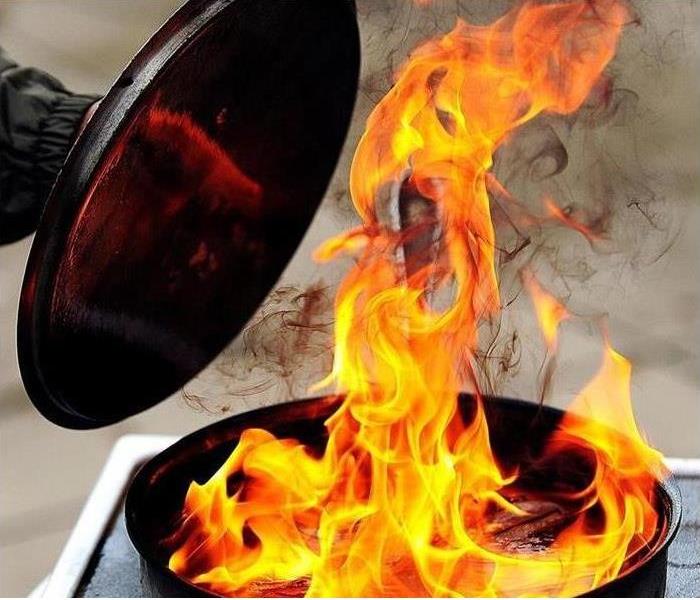 Be careful while cooking
Be careful while cooking
Cooking is the number one cause in home fires and injuries. Annually, there are 160,000 cooking fires caused by ignition of food or cooking materials.
Knowing how to smother a grease fire can help keep you, your family, and friends from getting hurt or having a severe house fire.
If A Grease Fire Starts:
- Cover the flames with a metal lid or cookie sheet. Leave the cover on until it has cooled.
- Turn off the heat source.
- If it’s small and manageable, pour baking soda or salt on it to smother the fire.
- As a last resort, spray the fire with a Class B dry chemical fire extinguisher.
- Do not try to extinguish the fire with water.
- Do not attempt to move the pot or pan outside.
DO NOT use flour, baking powder, or other cooking powders that resemble baking soda or salt. They act differently, and could make the fire worse.
If You Are Unable To Extinguish The Grease Fire:
- GET OUT!! You need to leave as soon as possible to prevent injury or loss of life
- When you leave, close the door behind you. This will help contain the fire inside.
- When you get to a safe distance from the fire, call 911 right away.
- Don’t re-enter your home until it has the “all clear” from the fire department.
Tips To Prevent Grease Fires:
- Stay in the kitchen while you’re cooking. One of the leading causes of kitchen fires is unattended cooking.
- Don’t cook if you’re exhausted or inebriated.
- Keep anything that can catch on fire away from your stovetop.
- Remove as much moisture from the food, and don’t add frozen foods to hot oil.
- Keep an eye on the temperature of your oil. If you see smoke or smell oil that means your oil is too hot. Turn off the burner and let it cool down.
- Heat the oil slowly.
- Add food gently, so there is no splashing.
- Keep a lid in arms reach in case of a fire.
- Always keep children and pets away from the stove while cooking.
SERVPRO of Kearney and North Platte is a pro at cleaning after a fire damage
10/19/2020 (Permalink)
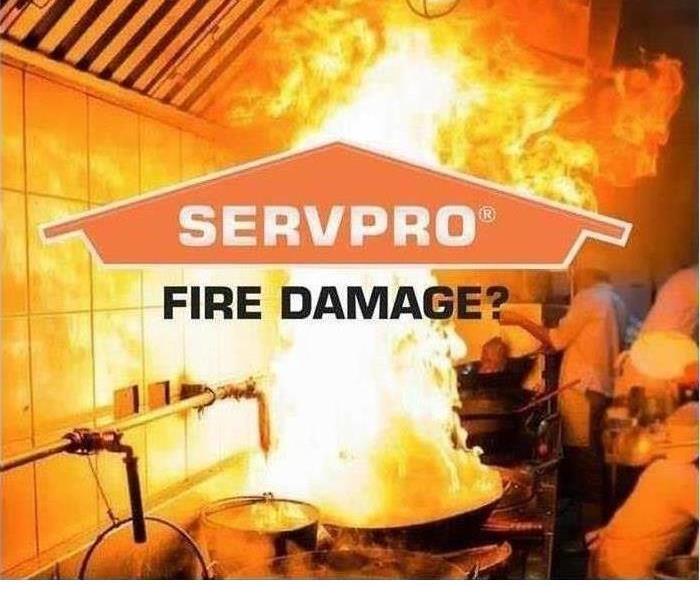 SERVPRO Fire Damage
SERVPRO Fire Damage
If you have a fire in your home or business, allow SERVPRO of Kearney & North Platte to help. Smoke and soot can damage the structure and the contents of your space. Our technicians are trained to assess the structure and contents and use their training to create a scope of work to get your home or business cleaned and back to preloss condition.
When it comes to cleaning smoked-damaged contents after a residential or commercial fire, the variety of contents in a typical job requires restorers to utilize a variety of cleaning methods.
Here is a quick description of each method of content cleaning:
- Dry Cleaning - Removes light to medium nongrease-based soils.
- Wet Cleaning - Removes moderate to heavy residues. The process involves cleaning using water, with or without a cleaning agent.
- Spray and Wipe - Apply a cleaning product using a spray bottle. After spraying, wipe the surface with a clean white towel. This method is effective for materials possibly damaged if saturated with cleaning product.
- Foam Cleaning - Effective for light residues or delicate materials. Clean with the foam of a cleaning agent rather than the liquid
- Abrasive Cleaning - Agitates the surface being cleaned. Apply a cleaning product containing abrasive ingredients
- Immersion Cleaning - Dipping contents items into a bath of cleaning product. This bath is an ultrasonic tank filled with water and cleaning solution. High-frequency sound waves then create high temperatures and microscopic jet streams of fluid to agitate and scrub contents.
SERVPRO recommends that you DO NOT attempt to clean smoke-damaged surfaces or contents yourself, and call the professionals at 308-535-1115
Sources of Fire to Watch Out For
10/6/2020 (Permalink)
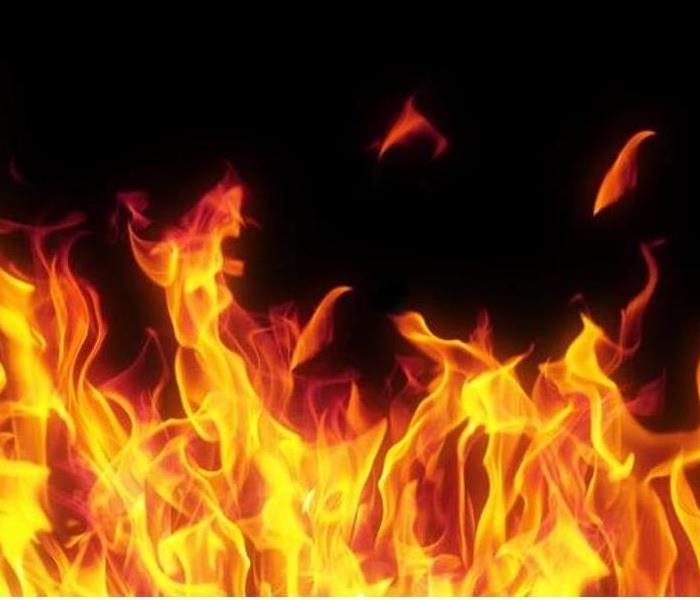 Don't Get Burned!
Don't Get Burned!
Sources of Fire to Watch Out For
Whether you live in a house, trailer, or an apartment, you are always at risk for a fire, or smoke damage. It’s a good idea to know what some of the main sources are.
- Cooking equipment – Cooking is one of the leading causes of house fires. When you get a pan of oil or grease too hot on the stove, it makes it very flammable and it can flash. Holiday cooking is another cause. When cooking during the holidays you’re preparing multiple dishes at once, while entertaining guests at the same time. If you’re not paying attention, a simple mistake such as laying a towel too close to the stove flame can cause a fire. Another source would be kitchen appliances, such as crockpots, toasters, and griddles. An electrical short from a damaged cord, or putting a hot appliance away before it has fully cooled, can cause damage.
- Candles – If a candle is allowed to burn too closely to curtains or flammable items, they could catch on fire. Also, leaving candles burning unattended can lead to a mishap.
- Smoking – If a cigarette or cigar is not completely snuffed out, the embers could still be a risk to ignite a fire.
- Children playing with fire – Most children are curious with fire, and what can cause it. They see someone light a match, or a lighter, or even the gas stove, they want to get ahold of it and light it themselves. Because they don’t understand the risk of what could happen, sometimes an accidental fire can happen.
- Barbeque – During the summer, there is a lot more outdoor cooking. Most outdoor cooking is done on a gas appliance, or using a charcoal or wood fire. You never want to leave a grill unattended on a wooden porch. And it is important to avoid grilling too closely to a house or fence.
- Wiring – When it comes to the wiring in your home, you don’t want to take any short cuts. It should be up to date, and installed by a professional. Overheating or an electrical short can quickly start a fire inside the walls of your home.
- Christmas tree – The Christmas tree is everyone’s favorite, whether it’s a real tree or artificial. If it’s a real tree, you want to make sure that the stand is full of water so the tree doesn’t dry out. With both artificial and natural trees, placing them too close to a heat source (such as a fireplace or baseboard heater) can be a fire hazard.
- Heating Equipment – During winter, it is a common practice to use a space heater to warm up a cold area in a house, or to add heat to a garage. It is critical that space heaters are kept a safe distance from any combustible materials. Walls, clothes, curtains, and furniture can ignite if they are too close to a space heater. The same holds true for electric baseboard heat registers. A safe radius of at least six inches from the front and sides of the unit should be kept clear of any combustible materials.
Some fires are accidental and beyond your control. But most can be easily prevented through basic safety precautions. Always be aware of the steps you can take to prevent a fire.
SERVPRO of Sooland specializes in the cleanup and restoration of residential and commercial property after a fire, smoke or water damage event. We can handle any size disaster!
Extension Cords Useful or Hazard??
5/13/2020 (Permalink)
The U.S. Consumer Product Safety Commission (CPSC) estimates that each year, about 4,000 injuries associated with electric extension cords are treated in hospital emergency rooms. About half of the injuries involve fractures, lacerations, contusions or sprains from people tripping over extension cords. CPSC also estimates that about 3,300 residential fires originate in extension cords each year, killing 50 people and injuring about 270 others. The most frequent causes of such fires are short circuits, overloading, damage and/or misuse of extension cords. The Do's Don'ts of using an extension cord. Do's
- Use extension cords only when necessary and only on a temporary basis.
- Use extension cords that are the correct size or rating for the equipment in use. The diameter of the extension cord should be the same or greater than the cord of the equipment in use.
- Keep electrical cords away from areas where they may be pinched and areas where they may pose a tripping or fire hazard (e.g., doorways, walkways, under the carpet, etc.).
- Always inspect the cord prior to use to ensure the insulation is not cut or damaged, exposed conducting wires can put you at risk for fire, burns, and electrical shock. Discard damaged cords, cords that become hot, or cords with exposed wiring.
Don'ts
- Do not use extension cords in place of permanent wiring.
- Never unplug an extension cord by pulling on the cord; pull on the plug.
- Do not remove the prongs of an electrical plug. If plug prongs are missing, loose, or bent, replace the entire plug.
- Do not use an adapter or extension cord to defeat a standard grounding device. (e.g., only place three-prong plugs in three-prong outlets; do not alter them to fit in a two-prong outlet.)
- Do not run cords above ceiling tiles or through walls.
Extended exposure to outdoor conditions can cause cords to deteriorate, so whether they're rated for indoors or outdoors, store all extension cords inside when they’re not in use. Regardless of whether or not it's being used, as long as a power extension cord is plugged into an outlet, it's conducting electricity. To avoid potential safety hazards, always remember to unplug extension cords when they're not in use!
SERVPRO of Sooland specializes in the cleanup and restoration of residential and commercial property after a fire, smoke or water damage event. We can handle any size disaster!
Call us at (712) 274-2416
Understanding Fire and What to Remember
2/19/2020 (Permalink)
Here at SERVPRO of Sooland, we understand the devastation fires can have on homes and businesses. We also understand the devastation and the struggle of trying to build your life back up after your home or business sustains fire damage.
Preparedness advocacy is a large part of what we do here at SERVPRO, and in light of the recent coverage of the fires in Australia, we wanted to share crucial information to remember if your home or business ever experiences a fire.
In the event of a fire occurring in your home or business, remember that every second counts. It’s important to always be prepared - the first thing you should have ready for a fire event is an escape plan.
Ready.Gov, the official website of the Department of Homeland Security, advises that families and businesses have a fire escape plan and practice it on average twice each year. When creating an escape plan for your home or business, remember the following:
- Fine two ways to get out of each room in the event the primary way is blocked by fire or smoke.
- A secondary route might be a window onto a neighboring roof or a collapsible ladder for escape from upper story windows.
- Make sure that windows are not stuck, screens can be taken out quickly, and that security bars can be properly opened.
- Practice feeling your way out of the house in the dark or with your eyes closed.
- Teach children not to hide from firefighters.
SERVPRO of Sooland specializes in the cleanup and restoration of residential and commercial property after a fire, smoke or water damage event. We can handle any size disaster!
Call us at (712) 274-2416
When Cleaning after a Fire, Trust the Professionals
2/19/2020 (Permalink)
When smoke damage strikes your home or office after the chaos and immediate worry is over you may be asking each other, how to clean up the mess? Maybe even talk and make plans to clean up the mess yourself. After all, it will keep costs down and you can get it done in your time frame.
It is completely within your rights to decide who helps with your loss or to do the work yourself. But we at SERVPRO are trained in the latest techniques and with the best cleaning agents to cut through soot and smoke in your property.
We work alongside you and your insurance company to quickly get you back in your home or office restoring your property to preloss condition and making it “Like it never even happened.”
SERVPRO of Sooland specializes in the cleanup and restoration of residential and commercial property after a fire, smoke or water damage event. We can handle any size disaster!
Call SERVPRO of Sooland (712) 274-2416
What you should know about Smoke Damage
1/14/2020 (Permalink)
Cleaning Smoke Damage From A Fire When the firefighters leave, it may seem like the danger has passed and the home is safe from further destruction. While fire may be the immediate danger, once it is gone, what it leaves behind will continue to affect the house. Ash and smoke, if left unhindered, will cause extensive corrosion, etching, and discoloration, not to mention powerful lingering odors. The only way to properly clean smoke and fire damage is to be extremely thorough. This entire process is very detailed. Ash residue is easily disturbed and can spread through the building with ease, causing nearly everything to need restoration.
Things you Need to Know about Smoke Damage
- Smoke Migrates to Cooler Areas: The behavior of smoke during a fire is largely dependent on temperature. Smoke is typically hot and migrates to cooler regions of your home. Unfortunately, the cooler regions of your home are often hard to reach places, like cabinets and the underside of furniture. This makes the cleaning process much more difficult and is one of the major consequences of smoke damage.
- Smoke Uses Plumbing to Migrate through Your House: Smoke naturally travels through plumbing systems, using holes around pipes to travel from floor to floor. This is the best way for smoke to travel throughout homes and buildings and cause further damage. Vents and plumbing systems are cleaned and often replaced if smoke damage is great enough.
- Wet, Smoldering Fires Produce the Most Damaging Smoke: The type of fire and the type of smoke produced by the fire make a huge difference when it comes to cleaning smoke damage. Wet, smoldering fires produce highly volatile and noxious smoke, the effects of which can persist for years if not cleaned properly.
- High-Temperature Fires Produce Easier to Clean Smoke Damage: Contrary to what you might believe, high-temperature fires tend to be less damaging than smoldering fires. That is because they burn very quickly and produce a different type of smoke that contains less damaging soot. As a result, even though the high-temperature fire may seem like it would produce more damage, you may just get lucky.
- A Very Damaging Component of Smoke is Invisible: While the billowing clouds of dark smoke may seem the likely culprit, it’s the invisible protein residues of smoke that can also cause severe damage. These residues can break down metal, wood, paint, and even porcelain, and their highly volatile chemical make-up allows them to penetrate deep into almost any substance while remaining invisible. Beware of this invisible enemy!
- Smoke Damage Can destroy Metal and Wood Items: You might think that hearty substances like wood and metal would not be affected by smoke as much as upholstery and textiles. You’d be wrong. The noxious protein residues in smoke can break down brass, copper, wood, and even stone, causing them to decay at an ultra-rapid rate. Be sure to let a professional know about the exposure of wood and metal items to smoke and the duration of the exposure.
- The Number 1 Rule to Prevent Lasting Smoke Damage: Get Air Moving: If you want to get a head start on cleaning up your home after smoke damage, follow the cardinal rule. Get air moving. Use fans and open windows to keep air circulating throughout your home. This will prevent any remaining smoke residues from penetrating even deeper into your house and property.
SERVPRO of Sooland specializes in the cleanup and restoration of residential and commercial property after a fire, smoke or water damage event. We can handle any size disaster!
Call SERVPRO of Sooland (712) 274-2416
Clean Your Dryer Vents
12/30/2019 (Permalink)
One of the most common causes of fires is also perhaps the most preventable.
Dryer vents connect from your clothes dryer and can build up lint. If not cleaned out properly, the air cannot flow properly, and a fire can result. This type of fire happens most frequently in homes, posing dangers to adults and children.
According to the U.S. Fire Administration, 2,900 home clothes dryer fires are reported each year. These fires cause an estimated 5 deaths, 100 injuries, and $35 million in property loss. The U.S. Fire Administration also reports that the leading cause of home clothes dryer fires is failure to clean them (34 percent).
Apart from cleaning your dryer vent, the U.S. Fire Administration has suggestions to enhance safety when using your clothes dryer:
- Don’t use a clothes dryer without a lint filter or with a lint filter that is loose, damaged or clogged.
- Don’t overload the dryer.
- Don’t use a wire screen or cloth to cover the wall damper. They can collect lint and clog the dryer vent.
- Don’t dry anything containing foam, rubber or plastic. An example of an item not to place in a dryer is a bathroom rug with a rubber backing.
- Don’t dry any item for which manufacturers' instructions state “dry away from heat.”
- Don’t dry glass fiber materials (unless manufacturers' instructions allow).
- Don’t dry items that have come into contact with anything flammable like alcohol, cooking oils or gasoline. Dry them outdoors or in a well-ventilated room, away from heat.
- Don’t leave a clothes dryer running if you leave home or when you go to bed.
SERVPRO of Sooland specializes in the cleanup and restoration of residential and commercial property after a fire, smoke or water damage event; as well as mold remediation. We can handle any size disaster!
Call us today at 712.274.2416
What Class of Fire Extinguisher do you need.
10/28/2019 (Permalink)
A fire extinguisher can be a life-saving tool when used correctly. The U.S. Fire Administration (USFA) recommends individuals are properly trained in order to use and maintain an extinguisher.
USFA says an extinguisher should only be used if:
• You have alerted other occupants and someone has called the fire department.
• The fire is small and contained to a single object, such as a wastebasket.
• You are safe from the toxic smoke produced by the fire.
• You have a means of escape identified and the fire is not between you and the fire escape route.
• Your instincts tell you that it is safe to use an extinguisher.
Classes of Fire Extinguishers:
- Class A: Use on ordinary combustible materials, such as cloth, wood, rubber, paper, and many plastics.
- Class B: Use on flammable liquids, such as grease, gasoline and oil.
- Class C: Use on appliances, tools, or other equipment that is electrically energized or plugged in.
- Class D: Use on flammable metals and are often specific for the type of metal in question. These are typically found only in factories working with these metals.
- Class K: Use on vegetable oils, animal oils, or fats in cooking appliances. These are generally found in commercial kitchens, but are suitable for the residential market.
SERVPRO of Sooland specializes in the cleanup and restoration of residential and commercial property after a fire, smoke or water damage event. We can handle any size disaster!
Call SERVPRO of Sooland (712) 274-2416
5 Important things to know about fire.
5/14/2019 (Permalink)
Whether your fire is on purpose (bonfire) or on accident is important to know your fire facts.
1. Earth is the only known planet where fire can burn. Everywhere else does not have enough oxygen. On Earth air consists of 21% oxygen.
2. Oxygen supply influences the color of the flame. A low-oxygen fire contains lots of uncombusted fuel particles and will give off a yellow glow. A high-oxygen fire burns blue.
3. Spontaneous combustion is real. Some fuel sources can generate their own heat—by rotting, for instance. Pistachios have so much natural oil and are so prone to heat-generating fat decomposition that the International Maritime Dangerous Goods Code regards them as dangerous.
4. Haystacks, compost heaps, and even piles of old newspapers and magazines can also burst into flame.
5. America’s deadliest fire took place April 27, 1865, aboard the steamship Sultana. Among other passengers were 1,500 recently released Union prisoners traveling home up the Mississippi when the boilers exploded. The ship was six times over capacity, which helps explain the death toll of 1,547.
SERVPRO of Sooland specializes in the cleanup and restoration of residential and commercial property after a fire, smoke or water damage event. We can handle any size disaster!
Call SERVPRO of Sooland (712) 274-2416
For more important facts about fire visit http://discovermagazine.com/2011/oct/20-things-you-didn't-know-about-fire
Fire is not a Toy
2/18/2019 (Permalink)
Each year, the Red Cross responds to nearly 64,000 disasters, the majority of which are home fires resulting in about 7 deaths and 36 injuries every day and over $7 billion in property damage every year. The Red Cross recommends keeping matches, lighters and other ignitable substances in a secured location out of the reach of children. Only use lighters with child-resistant features in the home as often times fire started can look like a toy for children. Using these precautions can help not only keep everyone in your family safe but may save a life.
SERVPRO of Sooland specializes in the cleanup and restoration of residential and commercial property after a fire, smoke or water damage event. We can handle any size disaster!
Call us at (712) 274-2416
It’s not just a fire, it’s the fire that affected you.
2/11/2019 (Permalink)
Fires can happen in any home or office, but there are things we can all do to limit the risks of fires starting in the first place and take steps to limit the impact of a fire should one start. Do you know what the leading cause of Winter Fires is? It may not be what you think. Should your home or office be damaged from a fire starting in the microwave in the breakroom from forgotten food or in your home from bad wiring, we can help. We understand that when it comes to your fire, it is not just another job. It is the business you built from the ground up and have poured blood, sweat and tears into. It is our dream home that you have spent time and money fixing and updating to make it the home your kids will grow up in and will hold memories and traditions. We walk with you through the process, guiding you with answers, advice and experience through to the other side where life will come back together.
SERVPRO of Sooland specializes in the cleanup and restoration of residential and commercial property after a fire, smoke or water damage event. We can handle any size disaster!
Call us at 712-274-2416
Five Leading Causes of Home Fires
1/21/2019 (Permalink)
Have you ever wondered if one type of incident or action is more likely to lead to a home fire than another? As it turns out, there are five causes that are more prevalent than others. Read on to learn what they are and what you can do to avoid them.
1. Cooking
Cooking fires are the number-one cause of all fires in the United States. They usually occur when someone leaves a kitchen appliance unattended while cooking. Frying creates the greatest threat.
2. Heating Appliances
Devices such as furnaces and space heaters also pose a significant fire risk. Similar to cooking fires, many of these accidents happen when a piece of equipment is left unattended or if it is operated incorrectly.
3. Electrical Gear
A home fire can also be caused by equipment used for electrical or lighting purposes. This includes lamps, power outlets and other objects that run on electricity. Once again, careful and attentive operation of electrical devices is crucial to stay safe.
4. Intentional Situations
Unfortunately some fires are started intentionally by those wishing to create chaos and destruction. Arson makes up the fourth largest category of household fires in the United States. Many perpetrators are under the age of eighteen.
5. Smoking-Related Accidents
Smoke-related fires are the fifth most common kind in the United States. Always practice common sense safety procedures if you are planning on smoking in or near your home.
A home fire is never a pleasant thing to think about, but knowing the leading causes of these disasters can help you to avoid them and the aftermath of a fire. Remember to always call for help and evacuate the premises if a fire begins in your home. Having a family evacuation plan is a must! Being educated is one of the first steps to take in order to keep your home, your family and yourself safer each day.
SERVPRO of Sooland specializes in the cleanup and restoration of residential and commercial property after a fire, smoke or water damage event. We can handle any size disaster!
Call us at (712) 274-2416
Deodorization with Ozone
12/17/2018 (Permalink)
Activated oxygen machines, otherwise known as ozone machines, work in your home to clean the air of odor. One of the most common uses is for the decimation of smoke odor. These machines work by breaking down the oxygen we breath (O2), and converting it into ozone (O3).
These machines have a wide range of uses and be used in one room of a house or the entire floor of a building. Here at SERVPRO of Sooland, we use them quite often when there has been a fire. The activated oxygen machine allows us to clean a room that smells of smoke without using any chemicals. These little machines are not limited to smoke odor cleaning however! They can also be used for pet and food odors!
If you have any odors in your home, call SERVPRO of Sooland to assess the situation. We have the knowledge, tools and track record to effectively remove odors in your home or business.
Call us today at 712.274.2416.
Tips and Tricks with Smoke Damage
10/24/2018 (Permalink)
When the firefighters leave, it may seem like the danger has passed and the home is safe from further destruction. While fire may be the immediate danger, once it is gone, what it leaves behind will continue to affect the house. Ash and smoke will cause extensive corrosion, etching and discoloration not to mention powerful lingering odors. The only way to properly clean smoke and fire damage is to be extremely thorough. This entire process is very detailed. Ash residue is easily disturbed and can spread through the building with ease, causing nearly everything to need restoration.
Things You need to Know About Smoke Damage
1. Smoke Migrates to Cooler Areas: The behavior of smoke during a fire is largely dependent on temperature. Smoke is typically hot and migrates to cooler regions of your home. Unfortunately, the cooler regions of your home are often hard to reach places, like cabinets and the underside of furniture. This makes the cleaning process much more difficult and is one of the major consequence of smoke damage.
2. Smoke Uses Plumbing to Migrate Through Your House: Smoke naturally travels through plumbing systems, using holes around pipes to travel from floor to floor. This is the best way for smoke to travel throughout homes and buildings and cause further damage. Vents and plumbing systems are cleaned and often replaced if smoke damage is great enough.
3. Wet, Smoldering Fires Produce the Most Damaging Smoke: The type of fire and the type of smoke produced by the fire make a huge difference when it comes to cleaning smoke damage. Wet, smoldering fires produce highly volatile and noxious smoke, the effects of which can persist for years if not cleaned properly.
4. High Temperature Fires Produce Easier to Clean Smoke Damage: Contrary to what you might believe, high temperature fires tend to be less damaging than smoldering fires. That is because they burn very quickly and produce a different type of smoke that contains less damaging soot. As a result, even though the high temperature fire may seem like it would produce more damage, you may just get lucky.
5. A Very Damaging Component of Smoke is Invisible: While the billowing clouds of dark smoke may seem the likely culprit, it’s the invisible protein residues of smoke that can also cause server damage. These residues can break down metal, wood, paint, and even porcelain, and their highly volatile chemical make-up allows them to penetrate deep into almost any substance while remaining totally invisible. Beware of this invisible enemy!
6. Smoke Damage Can destroy Metal and Wood Items: You might think that hearty substance like wood and metal would not be affected by smoke as much as upholstery and textiles. You’d be wrong. The noxious protein residues in smoke can break down brass, copper, wood, and even stone, causing them to decay at an ultra rapid rate. Be sure to let a professional know about the exposure of wood and metal items to smoke and the duration of the exposure.
7. The Number 1 Rule to Prevent Lasting Smoke Damage: Get Air Moving: If you want to get a head start on cleaning up your home after smoke damage, follow the cardinal rule. Get air moving. Use fans and open windows to keep air circulating throughout your home. This will prevent any remaining smoke residues from penetrating even deeper into your house and property.
Safety Tips when using a Space Heater
10/15/2018 (Permalink)
Nothing can take the chill out of a cold room quite like a space heater, but they are also dangerous, 40-percent of home heating fires are caused by space heaters. Before purchasing a space heater, it is important to think about how you will be using it. Will it be used for supplemental heat in colder rooms or other areas, or will it be used for emergency heat? As a general rule of thumb, electric space heaters are typically safer than portable fuel-burning models (e.g. natural gas, propane, kerosene.) When choosing a unit try to find one that is listed or labeled by a nationally recognized testing laboratory such as CSA (Canadian Standards Association), UL (Underwriters Laboratories), or ETL (Intertek). Doing this will ensure that the heater’s construction and performance meet voluntary safety standards. Continue reading for some tips for keeping your home or office safe while using a space heater. While some may seem obvious, others may surprise you:
- Protect with Smoke Alarms -Make sure you have smoke alarms/carbon monoxide on every floor of your home and they are tested them regularly.
- Keep it Level -Always make sure the space heater on a hard, level and non-flammablesurface
- Use a Timer - Many models feature programmable timers that can be used to program automatic on and off times for when you sleep or head to work.
- Area Free of Flammable Liquids- Do not put them on easily ignitable or combustible surfaces, such as rugs or carpets, or use them to dry wet clothing.
- Don't Extend the Power Line -Avoid using an extension cord. Plug a space heater directly into an outlet with enough capacity.
- Remember the 3 Feet Rule -Ensure the space heater is at least 3ft away from anything that isn’t non-flammable.
- Keep it a Kid Free Zone -Keep children and pets away from space heaters.
- Clean Your Space Heater -Be sure to clean your space heater regularly, and follow your manufacturer’s guide for specific advice on maintenance and inspection.
- Don't Leave it Running -Never leave a space heater on when you leave.
Most space heaters will warm you up, but not all are created equal. The best space heater will included safety features like tip-over protection and UL certification. It should also be easy to move and operate, dispersing heat without wasting energy. Below is a great website you can use to find the best space heater for you and your needs.
https://www.reviews.com/space-heater/
Contact Us
If fire or water damage strikes your home or business, give us a call. We are on call 24 hours a day, 356 days a year. SERVPRO Professionals have been helping home and business owners for more than 45 years. Contact SERVPROof Sooland at (712)274-2416
What to do and what NOT to do after a fire
3/19/2018 (Permalink)
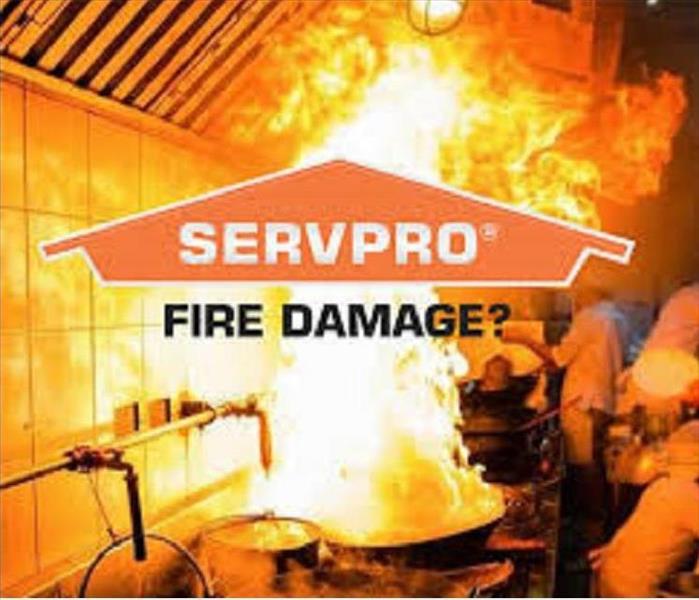 Have A Fire or Smoke Damage Emergency?
Call SERVPRO of Sooland (712) 274-2416
Have A Fire or Smoke Damage Emergency?
Call SERVPRO of Sooland (712) 274-2416
What To Do After A Fire
- Limit movement in the home to prevent soot particles from being embedded into upholstery and carpets.
- Keep hands clean so as not to further soil upholstery, walls and woodwork.
- Place clean towels or old linens on rugs, upholstery and carpet traffic areas.
- If electricity is off, empty freezer and refrigerator and prop doors open.
- Clean and protect chrome with light coating of petroleum jelly or oil.
- Wash houseplants on both sides of leaves.
- Change HVAC filter.
- Tape double layers of cheesecloth over air registers.
What NOT To Do After A Fire
- Don't attempt to wash any walls or painted surfaces or shampoo carpet or upholstery without contacting your SERVPRO Franchise Professional.
- Don't attempt to clean any electrical appliances that may have been close to fire, heat or water without consulting an authorized repair service.
- Don't use any canned or packaged food or beverages that may have been stored near the fire, heat or water.
- Don't turn on ceiling fixtures if ceiling is wet. The wiring may be damaged.
- Don't send garments to an ordinary dry cleaner. Improper cleaning may set smoke odor.
Faster to any Size Disaster
3/19/2018 (Permalink)
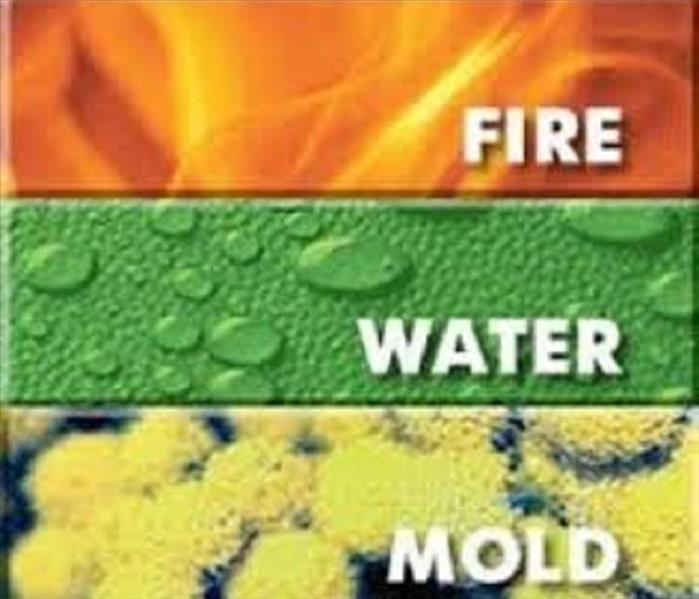 (712) 274-2416
(712) 274-2416
SERVPRO Franchise Professionals
- Provide 24/7 Emergency Service
- Highly Trained Fire and Water Restoration Specialists
- Faster to Any Size Disaster
- A Trusted Leader in the Restoration Industry with over 1,700 Franchises
- Preferred Vendor for Many National and Local Insurance Companies
Fire, Smoke, or Soot Damage? Call Today (712) 274-2416
The Fire Damage Restoration Process
SERVPRO Franchise Professionals know just how devastating a fire can be. Fire and water damage can leave your house unsafe and unlivable. They’re trained to clean and restore your home with as little disruption as possible. Learn more about the fire damage restoration process.
Step1: Emergency Contact
Step 2: Inspection and Fire Damage Assessment
Step 3: Immediate Board-Up and Roof Tarp Service (if needed)
Step 4: Water Removal and Drying (if water damage is present)
Step 5: Removal of Smoke and Soot from All Surfaces
Step 6: Cleaning and Repair
Step 7: Restoration
A Fast Response To Fire Damage In Sooland
3/5/2018 (Permalink)
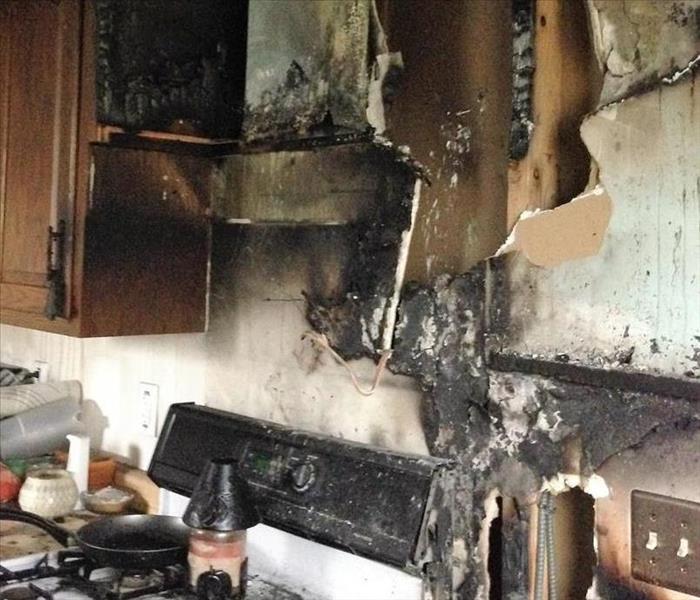 House fire here in Sooland.
House fire here in Sooland.
Fast SERVPRO Action Mitigates the Damages from Fire & Smoke
Homeowners rarely prepare for the damage a fire does. Emergency responders often extinguish the flames quickly, but soot and smoke move even more rapidly. The moment authorities permit you to reenter your dwelling the clock starts on successful restoration. SERVPRO understands the need for speed and assigns skilled technicians to your job within hours of your first call.
A lit candle caught a dining room curtain ablaze, causing fire damage to your house. Brought under control by local firefighters, it seems only the window, its coverings, and the walls and ceiling nearby were charred. Despite your relief and the appearance of minor harm, we know the entire house risks continuous deterioration. Fortunately, we also have the skilled technicians and proper equipment to stop the destruction and return your home to preloss condition.
Smoke and soot damage attack every space in your home, including areas far from the actual fire. The residue from the fire floats on the air, coating surfaces. This debris must be removed before it begins etching, distorting, discoloring, and disintegrating wood, fabric, gypsum board, plastic, metal, and glass, among other materials. If your HVAC system operated during the fire, it recontaminates the air, structure, and contents from every vent until cleaned and sealed. SERVPRO uses Institute for Inspection, Cleaning, and Restoration Certification (IICRC)approved methods and equipment to clean, treat, and recover all structures, mechanical systems, and contents within your property.
The restoration must begin as soon as possible because the acidic soot and smoke immediately attack every surface. SERVPRO specialists in fire damage recovery arrive ready to perform all necessary tasks because we train precisely for the opportunity to give your home back to you “Like it never even happened.” Obviously we discard destroyed items like the curtains, but otherwise, our focus is restoration, not tear out and replacement. This approach controls costs and avoids major disruption to your household.
Our crew assesses the damage in each room and plans proper procedures, using dry or wet cleaning strategies matched to the character of the residue found and the materials affected. Systematically SERVPRO works through your home room by room to assure all harm is reversed and the corrosive soot and smoke permanently eliminated. Deodorization experts among our workers take on odor eradication as a final task, progressing from cleaning to sealing, to airborne spray or thermal fogging as necessary, all intended to neutralize the tiny, smell-carrying particles that linger in your home.
SERVPRO of Sooland is ready to restore your fire damaged home immediately after contact. Call our staff at 712-274-2416 to schedule an inspection and get you back in your home as soon as possible.
Different Types of Smoke
1/2/2018 (Permalink)
 SERVPRO of Sooland
3220 Line Drive
Sioux City, Iowa 51106
SERVPRO of Sooland
3220 Line Drive
Sioux City, Iowa 51106
There are two different types of smoke–wet and dry. As a result, there are different types of soot residue after a fire. Before restoration begins, SERVPRO of Sooland will test the soot to determine which type of smoke damage occurred. The cleaning procedures will then be based on the information identified during pretesting. Here is some additional information:
Wet Smoke – Plastic and Rubber
- Low heat, smoldering, pungent odor, sticky, smeary. Smoke webs are more difficult to clean.
Dry Smoke – Paper and Wood
- Fast burning, high temperatures, heat rises therefore smoke rises.
Protein Fire Residue – Produced by evaporation of material rather than from a fire
- Virtually invisible, discolors paints and varnishes, extreme pungent odor.
For any questions or concerns, SERVPRO of Sooland will gladly help. Call us today at (712) 274-2416
Smoke and Soot
12/20/2017 (Permalink)
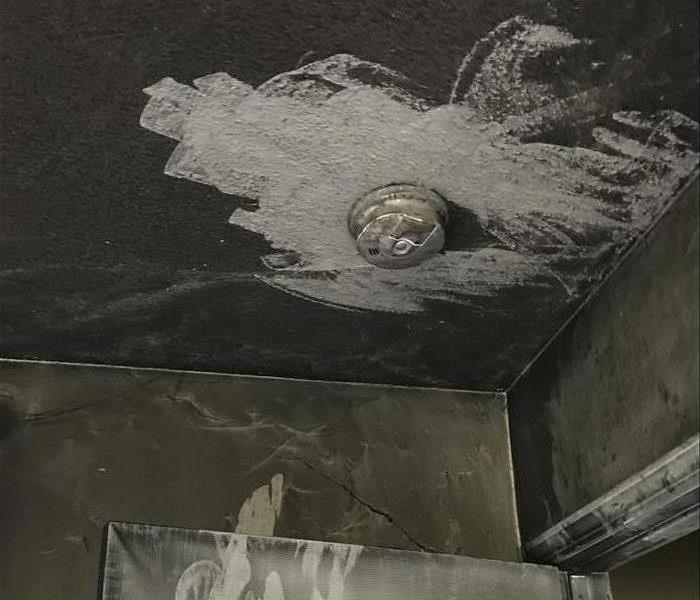 Have Questions about Fire, Smoke, or Soot Damage?
Call Us Today – (712) 274-2416
Have Questions about Fire, Smoke, or Soot Damage?
Call Us Today – (712) 274-2416
Smoke and soot is very invasive and can penetrate various cavities within your home, causing hidden damage and odor. Our smoke damage expertise and experience allows us to inspect and accurately assess the extent of the damage to develop a comprehensive plan of action.
Smoke and soot facts:
- Hot smoke migrates to cooler areas and upper levels of a structure.
- Smoke flows around plumbing systems, seeping through the holes used by pipes to go from floor to floor.
- The type of smoke may greatly affect the restoration process.
Our Fire Damage Restoration Services
Since each smoke and fire damage situation is a little different, each one requires a unique solution tailored for the specific conditions. We have the equipment, expertise, and experience to restore your fire and smoke damage. We will also treat your family with empathy and respect and your property with care.
Holiday Light Safety
12/19/2017 (Permalink)
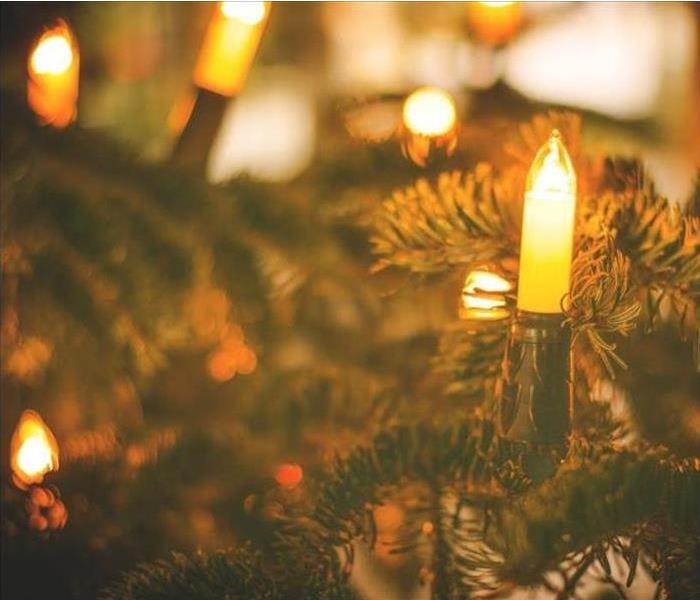 Check all lights to ensure that there are no worn or broken cords or loose bulbs.
Check all lights to ensure that there are no worn or broken cords or loose bulbs.
Holiday Light Safety
Christmas is upon us and holiday decorations are in full swing. For many home owners, decorating for Christmas is a tradition and something that is enjoyed by many. Whether you only decorate the interior of the home or you decorate both the interior and exterior, decorations and lights certainly add to the splendor of the Christmas season. According to the National Fire Protection Association fire departments responded to an average of 200 homes for structure fires related to Christmas trees between 2011-2015. Avoid Christmas tree and light related fires by following these simple safety tips.
Trees
When purchasing live Christmas trees, check for freshness and try to avoid dry trees. When you are cutting the tree, cut 1-2 inches from the base of the trunk to ensure optimal water absorption. Live trees require plenty of water. Make sure that you are checking the tree daily and watering when needed. If you prefer an artificial tree, ensure that the tag reads “Fire Resistant”. When placing the trees in your home, ensure that they are placed at least 3 feet away from all heat sources.
Lights
Check all lights to ensure that there are no worn or broken cords or loose bulbs. If you find any damage, dispose of the damaged lights and replace. When purchasing lights be sure to check the label that shows whether or not they are for indoor or outdoor use and purchase accordingly. In addition, read the instructions included with the lights. Most recommend that you plug no more than three strands together so that you are not overloading the socket. Last but not least, turn ALL Christmas lights off when going to bed or leaving the home.
If you find yourself with a damage this holiday season, call our office at 712-274-2416. Our team will evaluate your damage and give you a clear explanation of the restoration process.






 24/7 Emergency Service
24/7 Emergency Service





